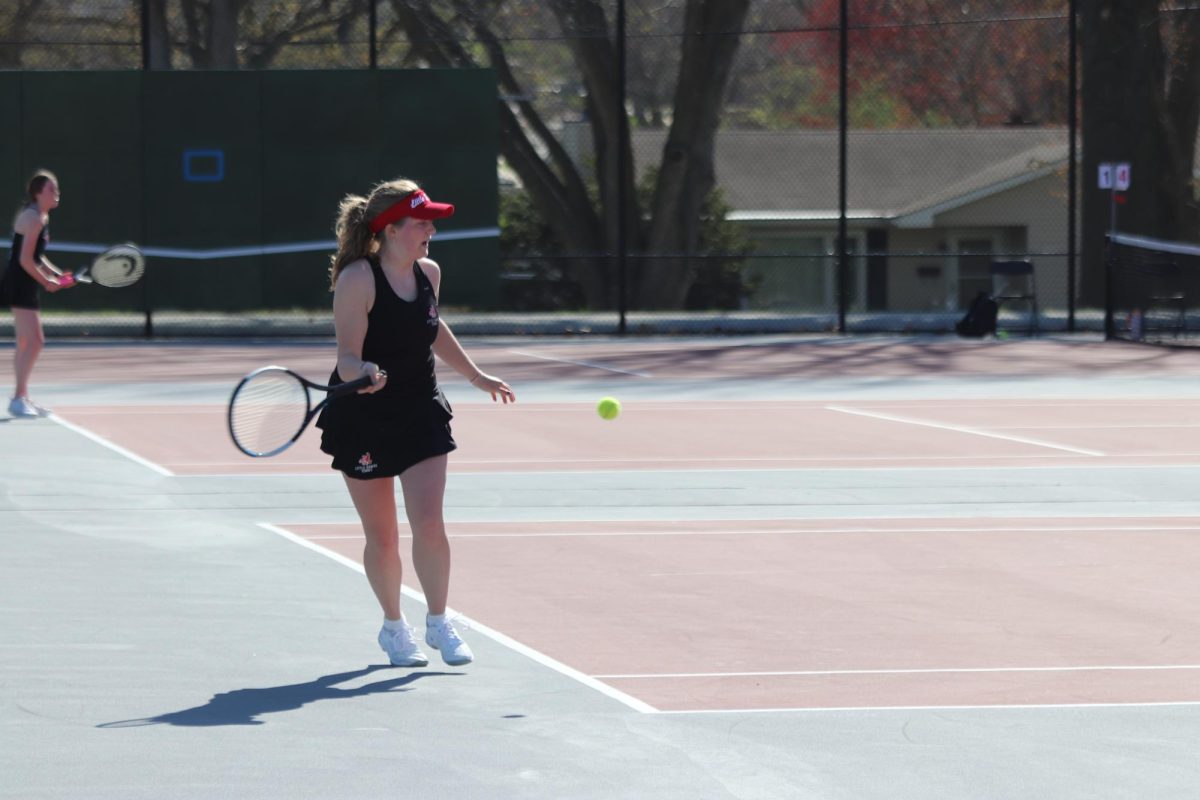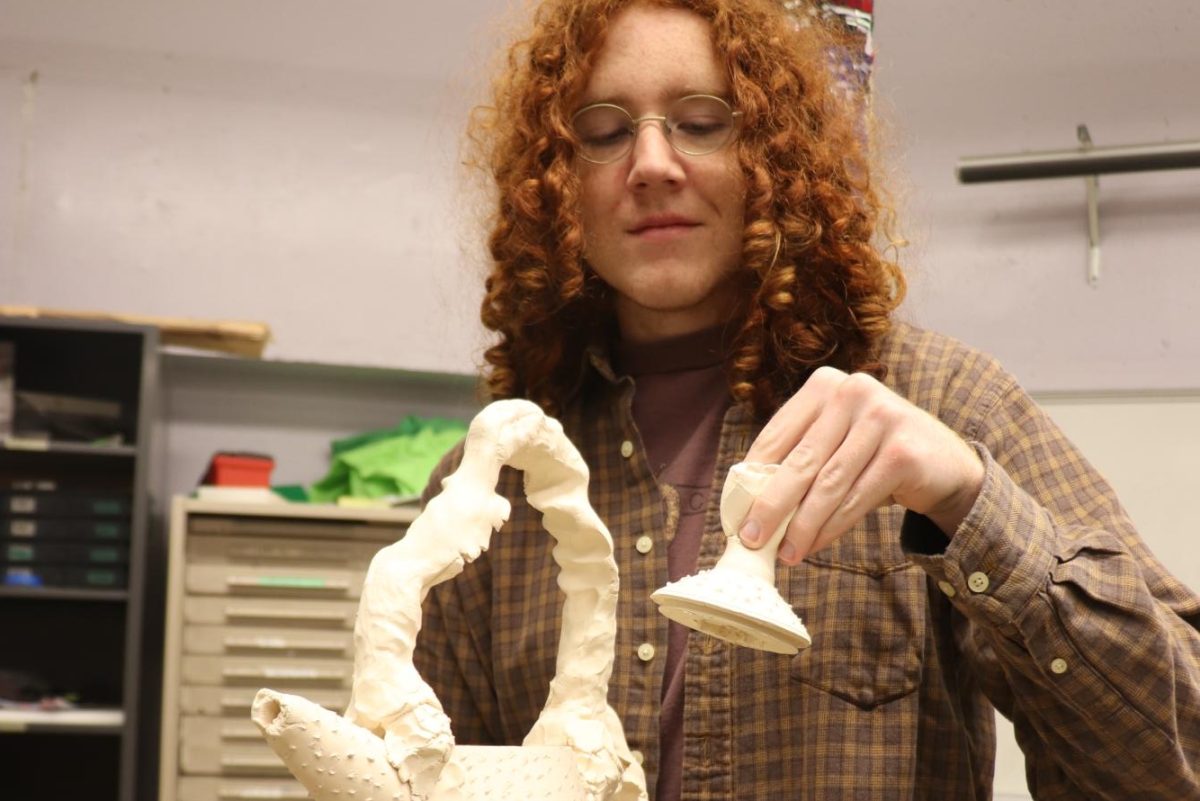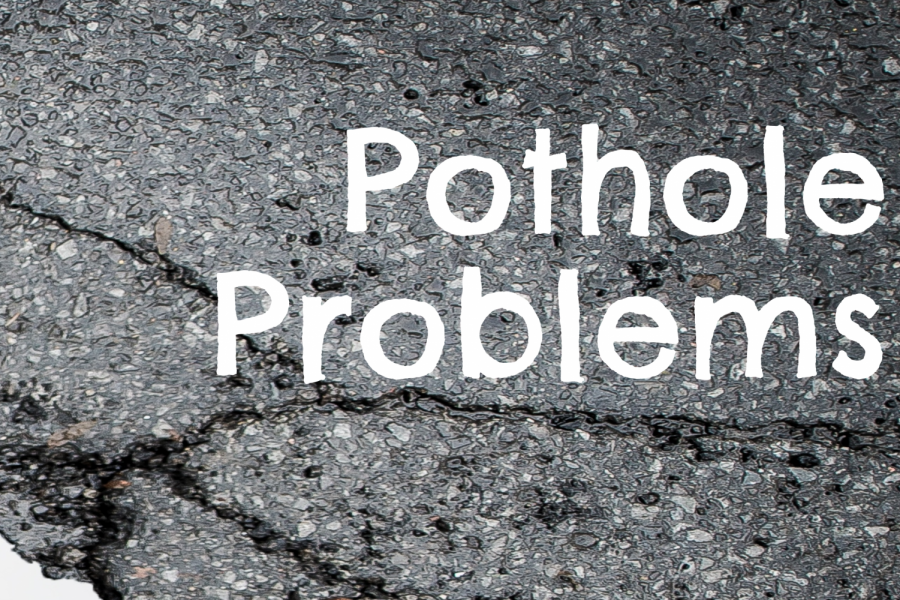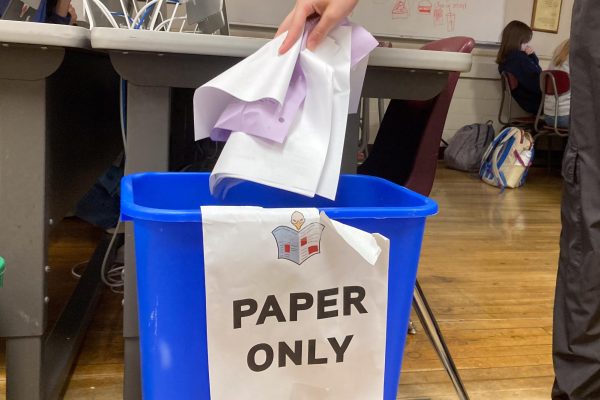Problems With Potholes
Members of the community discuss the recent occurrence of potholes around Iowa City.
May 11, 2019
Spring is now in full swing, but the remnants of this past winter are still wrecking roads faster than they can be fixed. It is common to see potholes in the spring due to the freeze and thaw cycle around Iowa City, however, some speculate that the potholes this year have been worse than normal.
“The potholes may have seemed very numerous this spring due to the high amounts of snowfall in January and February. For about seven weeks, the only thing that filled potholes across the city was snow,” said Brock Holub, the Street and Traffic Engineering Superintendent of Iowa City. “Usually there is a break in the snow that allows us to fill in some of the bad potholes.”
According to Jerald Schnoor, who works in the Department of Civil and Environmental Engineering, Department of Occupational and Environmental Health, Center for Global and Regional Environmental Research & Research Engineer, and IIHR Hydroscience and Engineering, the heavy snowfall this year is partially responsible for the increased number of potholes this spring.
“Potholes are formed by the differential freezing and thawing which expands and contracts the underlying gravel and soil,” said Schnoor.
While the increased snow is what caused the tire slashing potholes around Iowa City to form, the polar vortex is one possible explanation for all of the worsened winter weather.
“It is thought that the polar vortex resulted from the warm water and warm air from the Arctic sea–caused by climate change–pushing the jet stream further south. Along with jet stream came the extremely cold air that normally resides stably in a cone over the North Pole. It slipped down onto the Central United States and Siberia,” said Schnoor.
The jet stream is correlated to the polar vortex, but some still wonder what it is.
According to Live Science, “jet streams are like rivers of wind high above in the atmosphere. These slim strips of strong winds have a huge influence on climate, as they can push air masses around and affect weather patterns.”
According to Schnoor, it is possible that the polar vortex and jet stream played into the potholes this spring.
“Yes, it is possible the extreme cold made the soils freeze deeper, expanding, and breaking the asphalt and concrete pavements when the temperature thawed,” said Schnoor.
According to Schnoor, climate change, and therefore the worsening effect on potholes, could be helped by engaging in eco-friendly processes.
“We can mitigate climate change by reducing our emissions of greenhouse gases to the atmosphere, including the carbon dioxide which emanates from burning of coal, oil and natural gas,” Schnoor said.
As well as helping to improve the climate, there are also currently processes in place to help manage existing potholes.
“We have two crews out filling potholes every day,” said Holub. “We fill our main arterial roads first and review complaints as they come in.”
However, the process of actually filling a pothole can be tricky or difficult for the road crews that work on them.
“It is difficult to put cold mix asphalt in the potholes and get it to stick. The moisture and debris in the holes don’t allow the material to stay in,” Holub said. “Our staff tries very hard to get the pothole clean before filling, but it is often difficult to do so.”
Overall, there is still a basic practice that road crews engage in to try and repair the roads.
“We try to make fix the pothole right the first time, but this doesn’t ensure that it won’t happen again,” Holub said. “The goal is to make sure the pothole is clean and free of moisture, then to tack a coat of oil in the hole, place in hot mix asphalt, and compact it with a roller.”
However, despite the city’s efforts, students continue to worry about the damage and danger that the unfilled potholes might cause.
“I drive to school and back every day with my sister,” Savanna Josephson ‘21 said. “My driving experience, especially around City High has been affected by potholes. They make the drive uncomfortable, they are a danger, and constantly driving around them can be stressful because sometimes I am forced to drive into the other lane.”
Along with avoiding potholes, Josephson also worries about the negative impact that they could have on her car.
“I am worried about my tires because potholes can put large amounts of stress on them which can be expensive to fix,” Josephson said.
Savanna Josephson’s sister, Sierra Josephson ‘21, has voiced the same discontent with the streets.
“I am really frustrated with the potholes that have come up and how neglected they have become,” Sierra Josephson said. “Somehow the city and school district have enough money for a new addition to City High along with a 30 million dollar basketball court, yet they don’t have the time or money to fill the potholes.”




















































